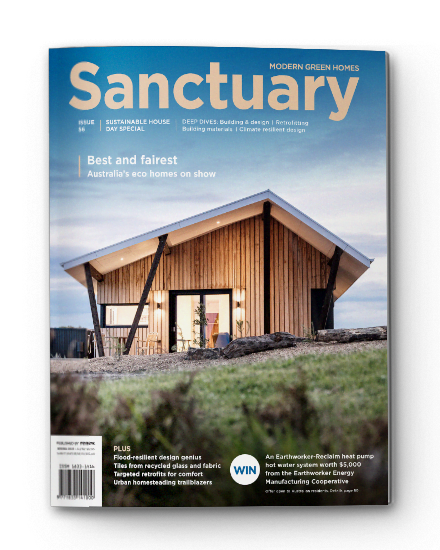Stepping it up

This high-performing Sydney home employs a site-specific design that breaks out of the typical Passive House box while still achieving the energy efficiency and renewable energy requirements.
At a glance:
- Certified Passive House Plus on a tricky site
- Two green roofs and a central courtyard
- All-electric home
- 10kW solar PV system generates more energy than the family consumes
Passive Houses can have a tendency to be cubic or boxy in shape, as the simpler the building form and the lower the surface-area-to-volume ratio, the easier it is to achieve the required airtightness and energy efficiency. However, it doesn’t have to be this way. A recently completed Passive House Plus in the Sydney suburb of Strathfield South takes a different form, as the challenging block called for a solution that was ‘outside the box’.
The clients, May and Matthew, bought the block in 2009. The house was cold, lacked space, light and storage, and needed structural work. They initially planned to renovate, but after speaking to architect Andy Marlow at Envirotecture it became clear a knockdown and rebuild was the best way forward as the existing house required more work than was cost-effective. By building a new house, the couple could achieve their brief for a sustainable, energy-efficient house that would suit them and their two young children well into the future.
Site conditions made a standard passive solar design difficult: the street is to the north where a large tree obstructs solar access to the front of the house, and the block slopes downward from the street with a two-storey house to the west. In response, the Envirotecture team initially opted for a solution combining passive solar design with Passive House principles. This first design included single- and double-storey sections, green roofs and a central courtyard, but when the building was costed higher than anticipated, Andy developed a second design more typical of the compact Passive House box. “It was cheaper, but not enough for us to forgo how much we loved the original design. If we had to spend a lot of money, we decided we might as well get something we really loved and so we went with the first design,” says May.
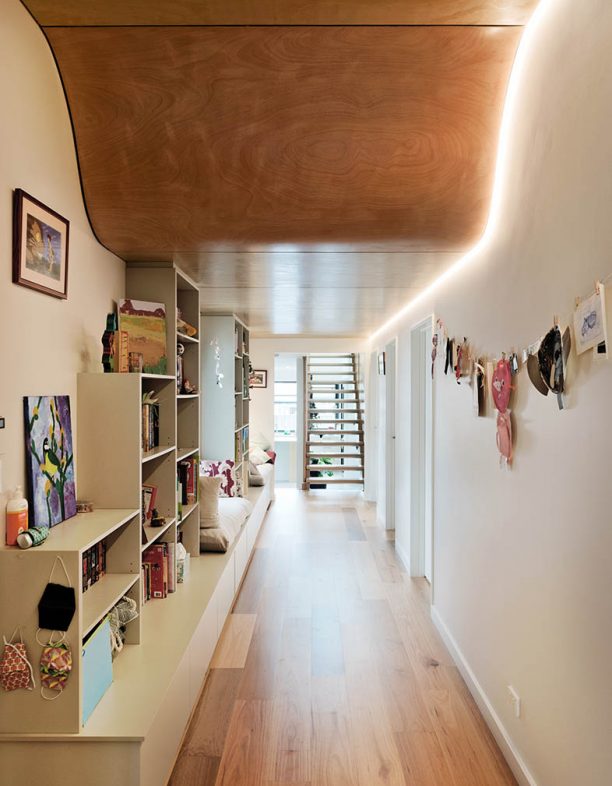
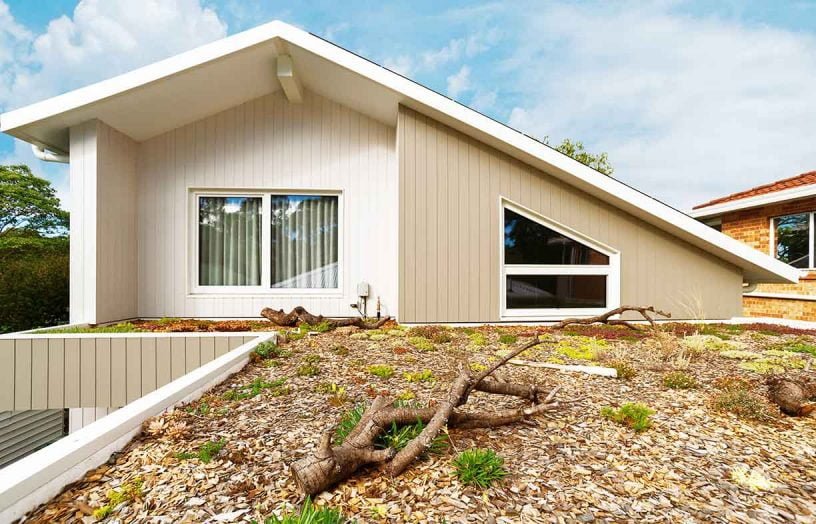
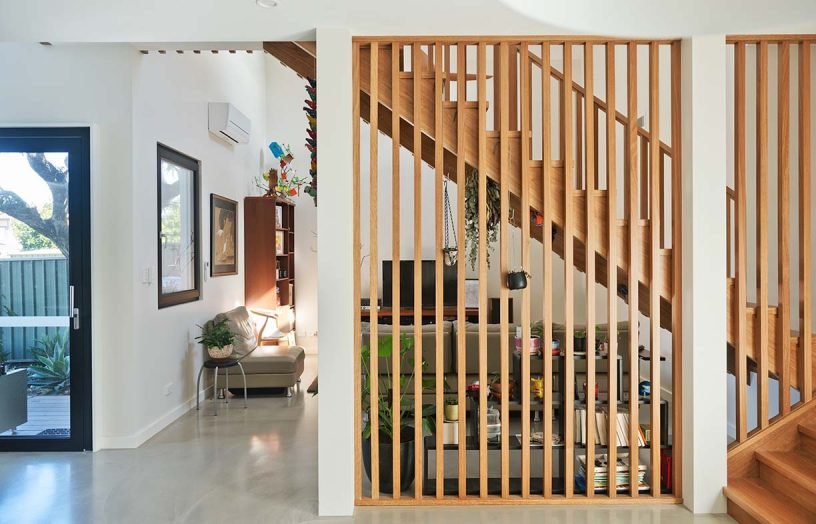
The front of the house is single storey with a gabled roof that fits with the vernacular of the streetscape. The challenge was then to get sun into the back of the house. To achieve this, a flat green roof and a side courtyard are in the centre of the plan, so that light can enter the two-storey rear volume.
Internally, the garage, two children’s bedrooms and study are in the front of the house beneath the gabled roof, and the laundry and bathroom are beneath the flat green roof. The living area is in a double-height space at the rear, with the dining and kitchen adjacent. An open staircase ascends to the main bedroom, walk-in robe and ensuite (with Japanese bathtub) upstairs.
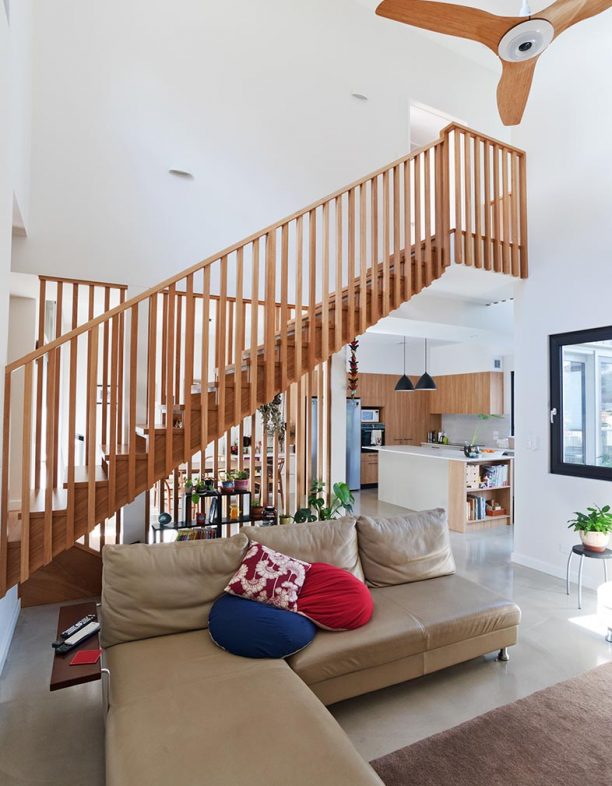
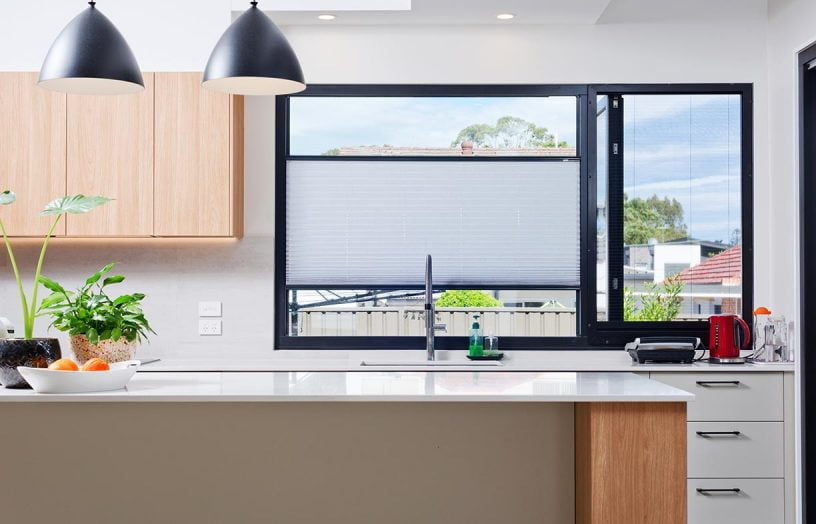

The double-height ceiling and a high-level triangular window opening onto the green roof work together to bring light and a greater sense of space into the living area, while a glazed sliding door to the courtyard allows light to enter the dining area and kitchen. The open treads of the staircase also allow a view through to the backyard, and a window at the top of the stairs provides a sky view.
The house is all timber framed, including the structure supporting the green roof. Inside, an inspired design feature is the elegant curved timber ceiling in the hallway, which serves several purposes. It enhances the arrival experience into and through the house, provides a seamless transition between the front and central sections with their different roof structures, and hides the ductwork for the mechanical ventilation with heat recovery that delivers filtered air to every room. And with joinery for storage and seating, the hallway has become a favourite place for Matthew and May’s children to read, and a convenient place to sit and put on shoes.
The building meets the requirements of Passive House Plus because it generates at least as much renewable energy as the residents consume, thanks to rigorous design and a 10-kilowatt solar array; May and Matthew are yet to pay a utility bill. “We knew we had to get the design right, or it would be impossible or very expensive to fix. We thought to invest in the important things, like triple glazing, that are going to last for a long time, and save where we could on other things such as fixtures and fittings,” says May. “That’s the approach we took to the project and every dollar has been worth it.”
While the house breaks with the conventional compact shape of a Passive House, its more complex and site-specific design achieves the energy efficiency and renewable energy requirements. “It’s not a simple geometry and there is lots of external surface compared to volume, which is not very Passive House, but demonstrates that with this approach, if you’re careful and creative you can do anything,” says Andy.
Further reading
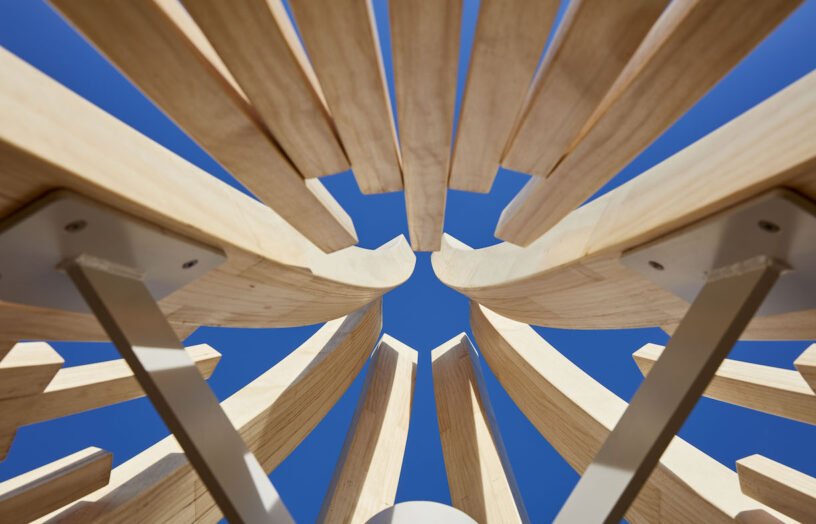 Ideas & Advice
Ideas & Advice
In praise of Accoya
Native hardwoods are beautiful, strong and durable, but we need to wean ourselves off destructive forestry practices. Building designer and recreational woodworker Dick Clarke takes one hardwood alternative for a test run.
Read more House profiles
House profiles
Airy flair
A minimalist renovation to their 1970s Queenslander unlocked natural ventilation, energy efficiency and more useable space for this Cairns family.
Read more House profiles
House profiles
Pretty in pink
This subtropical home challenges the status quo – and not just with its colour scheme.
Read more

